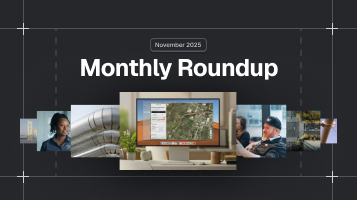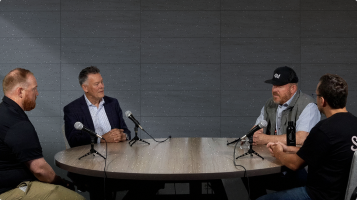Water and Sewer Infrastructure in Texas
Written by

Published on
January 8, 2023


Table of contents
Water and sewer lines have remained primarily unaltered for more than a century in Texas and elsewhere in America. The Odessa water outage is an unsettling example of how old Texan infrastructure truly is. The water line that caused the outage was almost 60 years old. Although engineers build such infrastructure to last, much of it is aging and needs repairs and replacements.
In addition, underground infrastructure that carries water to homes and businesses often has lead. The American Water Works Association (AWWA) released a report in 2016 that estimated that between 15 and 22 million people in the US are served by water service lines made of lead. The same report estimated that replacing these lead service lines could cost more than $30 billion.
In short, water and sewer lines need repairs and replacements for various reasons. However, this requires funding, access to the right technology, and mitigating risks during repairs and replacements.
In this article, we look at the state of water and sewer infrastructure in Texas and what needs to be done to improve it.
What is the water & sewer line construction industry?
In Texas, the water & sewer line construction industry consists of contractors who oversee the design, construction, reconstruction, management, and repair of different water and sewer infrastructure. This includes water mains, aqueducts, pumping stations, storage tanks, drains, sewers, sewage treatment plants, etc.
The industry also consists of companies and contractors who undertake maintenance work and those who are involved in compliance management. Various professionals, companies, and industry bodies generally ensure that water and wastewater services go uninterrupted.
What are the activities of the water & sewer line construction industry?
The most common industry activities are municipal water main and sewer construction. A water main is an underground pipe that acts as an arterial water supply route to communities and businesses. Sewer and drain construction pipes are laid to carry human and industrial waste and stormwater. In addition to actual construction, the industry is responsible for managing infrastructure construction and its repairs and maintenance.
Ensuring uninterrupted water & sewer services
Providing these services requires maintenance specialists to have access to detailed plans and maps of underground sewers, water mains, and water supply infrastructure.
Infrastructural development such as highways, real estate, and other large projects often have to take water and sewer line infrastructure into account so that they are not damaged while digging.
It is a legal requirement in Texas to call 811 and ensure that water, sewer, telecommunications, and gas pipelines are not affected during digging. Unfortunately, Call 811's services are neither thorough nor effective for large infrastructure projects. Contractual and repair companies need advanced mapping solutions like the one offered by 4M Analytics.
Water & sewer line construction in Texas - County-based data
In the US, the water & sewer line construction industry is predominantly concentrated in Texas, California, and Florida. According to a report published on the Ibis World, the top three counties where much of the construction industry operates are Harris, Dallas, and Tarrant. These are also the most populated counties in Texas.
However, water and sewer infrastructure across Texas is aging and is in need of major repairs and replacements. As a result, we expect the industry to move into other counties such as Bexar, Travis, Collin, Denton, and Hidalgo. Other heavily-populated counties such as Fort Bend, El Paso, and Montgomery may have also seen a spurt in construction and repair-related activities.
Perspectives on water infrastructure jurisdiction are changing.
Utility companies usually manage pumping stations, distribution mains, treatment plants, and tanks. On the other hand, the customer takes care of in-house plumbing and sewer laterals that carry sewage to municipal sewer pipes.
- According to The U.S. Centers for Disease Control and Prevention (CDC), 90% of Americans get their water from centralized utilities. The rest depend on private wells and other decentralized water supply facilities.
- The US Environmental Protection Agency (EPA) estimates that more than 20% of Americans depend on decentralized wastewater treatment systems and private septic tanks.
It is important to note that many Americans, including Texans, depend on themselves for water supply and sewerage services. Utility companies may benefit from expanding their jurisdiction in these rural and remote communities. Utility coordination is an important service that helps various stakeholders liaise and arrive at profitable and practical solutions for everyone involved.
Climate change and water infrastructure
The 2018 Camp Fire, which wreaked havoc on the town of Paradise, California, highlighted the growing effect of climate change on water and sewerage infrastructure. Fires melted underground pipes, leading to panic and destruction.
Texas needs to be more prepared for such events, and there is simply no protocol to follow in case water and sewer mains get damaged due to flooding, fires, and other extreme weather events. It is essential to build infrastructure that considers climate change and ensure that what is built today is future-proof for at least a century or more.
However, all this requires predictive analytics and an AI-enabled understanding of topography and geography. Advanced utility risk mitigation strategies can help create water and sewer infrastructure that is future-proof and immune to climate change.
Funding water and sewer infrastructure projects
Texas Water Development Board (TWDB) is responsible for providing affordable water and wastewater services to Texans. It offers water planning, financial and technical assistance, and data collection and dissemination. To ensure that Texans get adequate support to access clean water and sewer management, the TWDB funds several projects. Some of TWDB’s funding sources are:
- Clean Water State Revolving Fund (CWSRF) - Offers loans for sewerage-related projects.
- Drinking Water State Revolving Fund (DWSRF) - Loans for drinking water-related projects, especially for disadvantaged communities
- Texas Water Development Fund (TWDF) - This program offers loans for several projects ranging from water quality enhancement to municipal solid waste treatment.
- Economically Distressed Areas Program (EDAP) - Grants for wastewater and regular water infrastructural services in economically distressed areas
- Rural Water Assistance Fund (RWAF) - Low-cost financing for both wastewater and water projects in rural communities
- State Participation Program (SPP) - This program allows TWDB to become a temporary owner in a regional project.
- State Water Implementation Fund for Texas (SWIFT) - Flexible loans for a variety of water and sewerage-related projects.
This contact list helps you find the right points of contact if you are looking for TWDB’s financial assistance programs by region in Texas.
The role of the Texas Water Infrastructure Coordination Committee (TWICC)
The Texas Water Infrastructure Coordination Committee (TWICC) helps identify compliance issues about water and wastewater infrastructure. In addition, it also helps develop solutions for these compliance issues and create affordable funding strategies for different projects. It consists of federal and state funding agencies and various industry-oriented bodies such as water and wastewater trade organizations, assistance providers, and regulatory bodies.
Texan water and sewerage infrastructure needs serious work.
Texas' water and sewerage infrastructure is suffering, and the crisis is endangering several communities across the state. The American Society of Civil Engineers' (ASCE) 2021 report card rates Texas' drinking water infrastructure a C minus. The same guild rates the state's wastewater infrastructure with a dismal D.
The ratings, the news headlines from various communities in the state, and the public's general perception are that Texan water and sewerage infrastructure is ailing and badly in need of attention. From loss in water levels to old and deteriorated infrastructure, the problems are one too many to address. In addition, lead-based pipes still serve many communities, which can prove to be a health hazard.
Get the approvals and funding for your projects quickly.
Texas' water and sewerage infrastructure requires urgent attention due to a history of poor service and noncompliance with various regulations. This also means there are several opportunities for profitable infrastructure projects. Although there are several funding options, thanks to the Texas Water Development Board (TWDB), these may be difficult to get approved. The following steps can help you proceed with water and sewerage infrastructure projects:
- Presenting a plan of action that demonstrates access to existing utility data and mapping
- Ability to implement utility coordination and minimize conflicts
- A proven strategy to mitigate utility risks, including those associated with climate change
4M Analytics can help you with all these and more and help you implement mega water and sewer infrastructure projects across Texas. Contact us today to find out how our technology solutions can help you.
Recent blog posts

Our Newsletter
Join 7k infrastructure professionals
Get monthly insights on ways to build smarter, faster and safer with Utility AI.

.avif)




